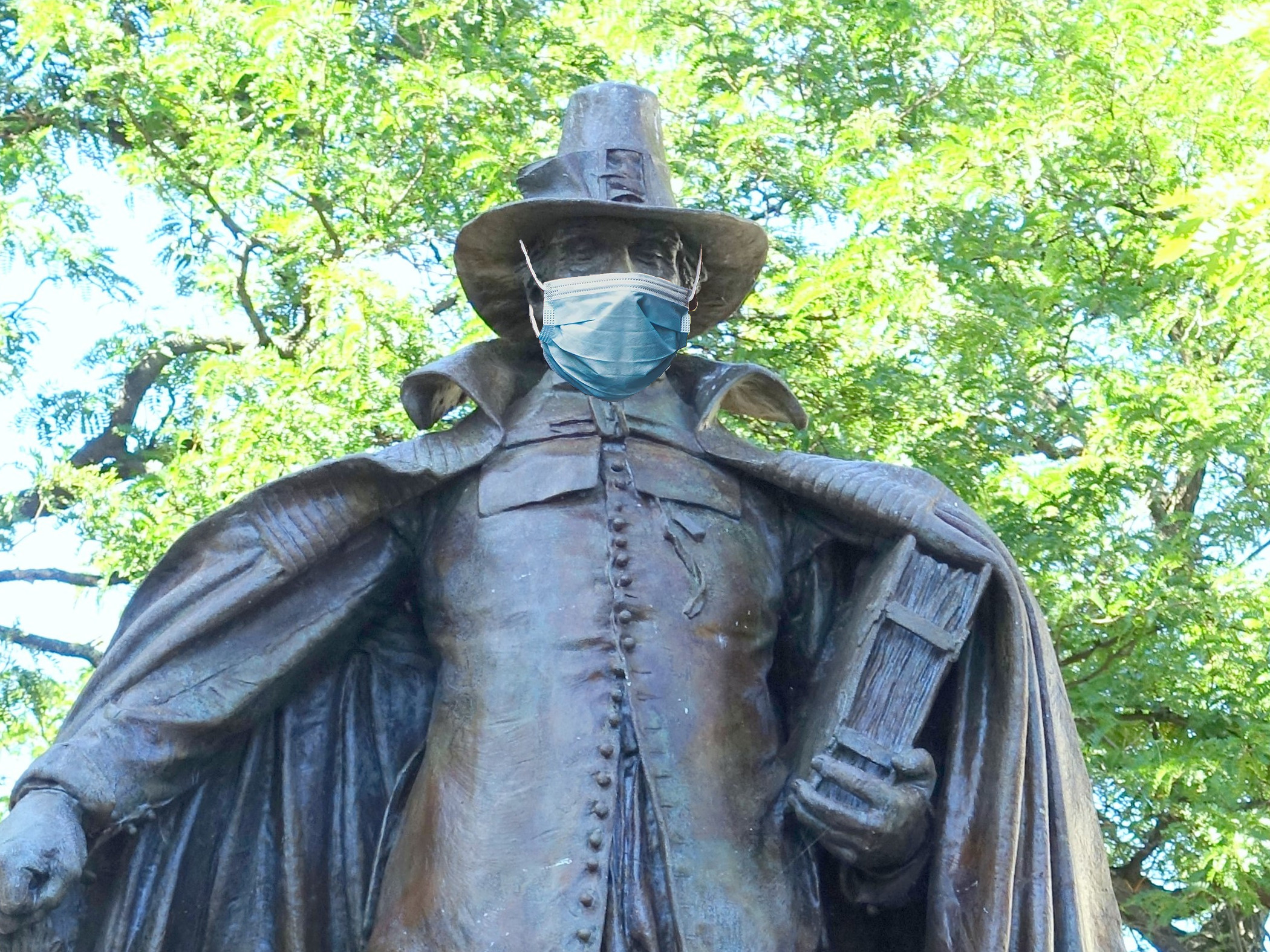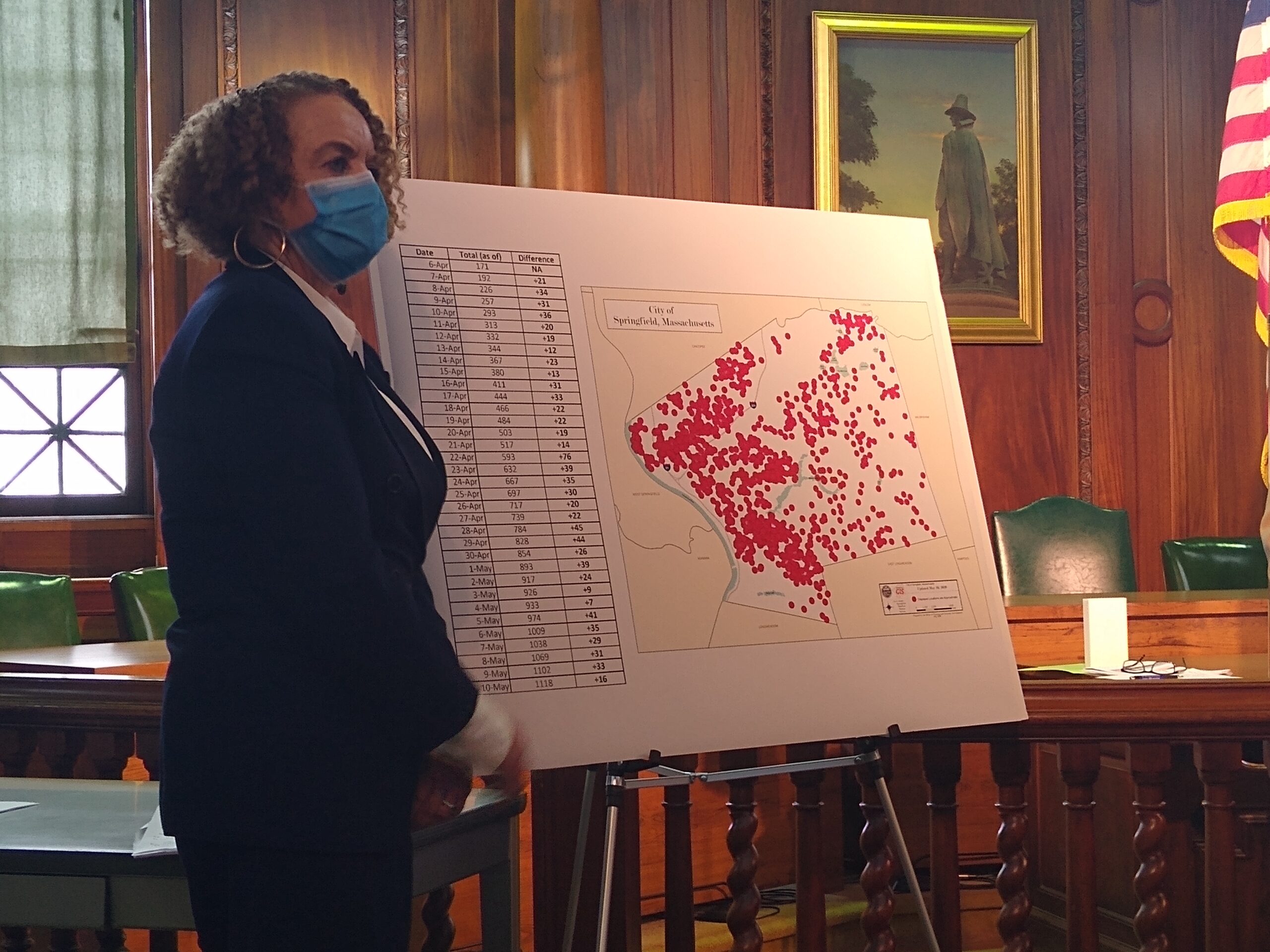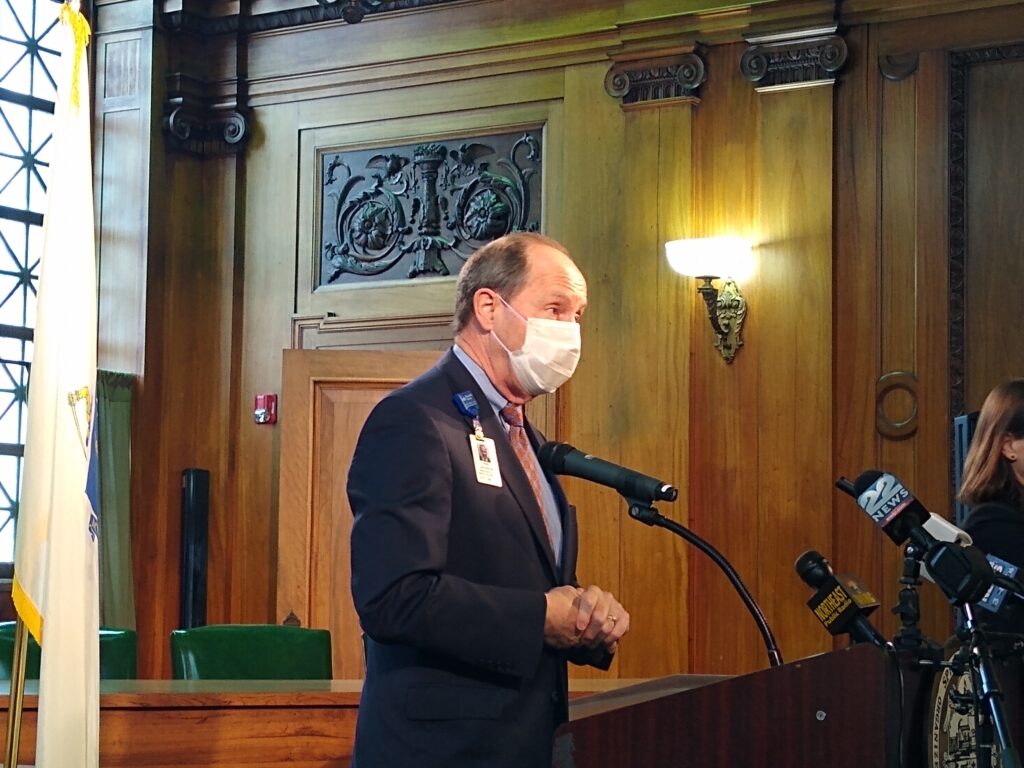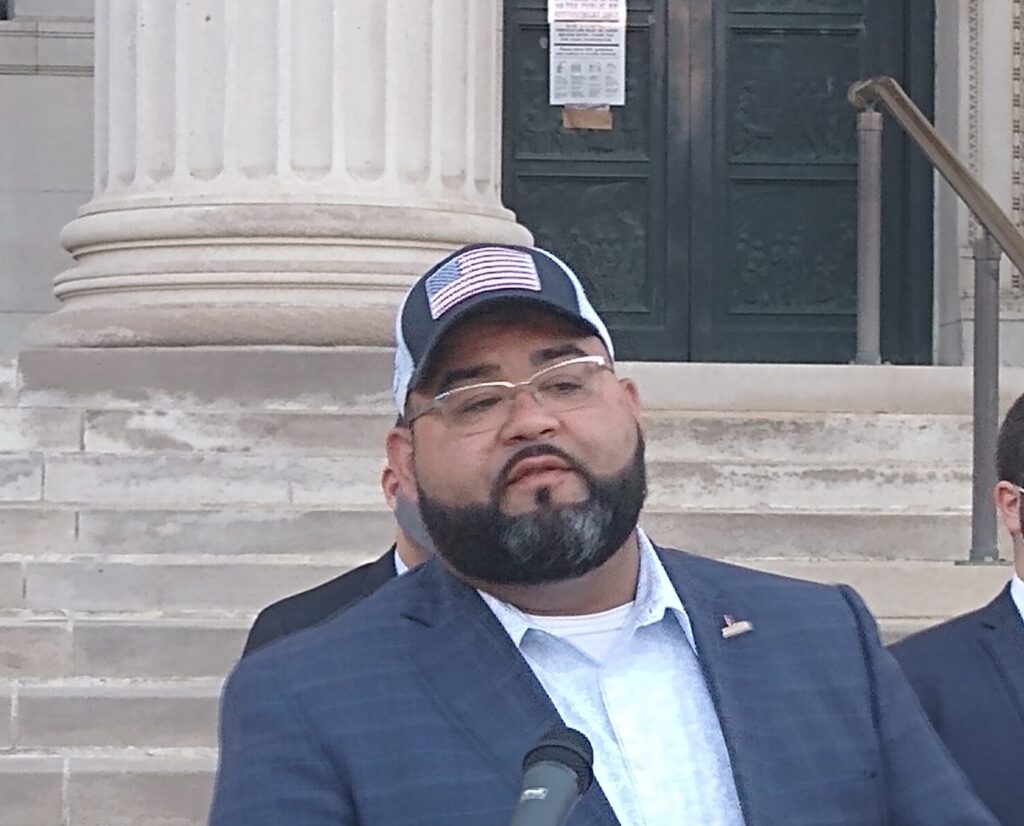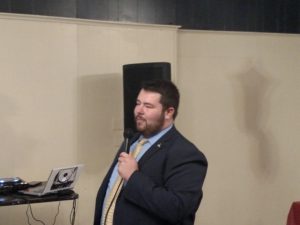Wishing Springfield a Not-Quite-Happy Coronaversary…
SPRINGFIELD—Ranking at or near the bottom by various wealth metrics, the City of Homes looked like a sitting duck as the pandemic crashed upon the United States. In the weeks after the City Council’s March 16 meeting, its last in-person since then, Massachusetts and Connecticut became hotspots. Later waves flooded Upstate New York. Chelsea, a poor and diverse city like Springfield, if much smaller, became a warning of things to come.
Make no mistake. The pandemic hit Springfield, taking 232 residents and infecting 10% of the city’s population by last count. Countless jobs disappeared. Yet, as the city passed its coronaversary earlier this month, Springfield has somehow escaped horrors even wealthier cities faced. Its public health and medical establishments moved quickly, mitigating spread and the direst of outcomes.
“We have been able to ask individuals to sacrifice and comply with the governor’s guidance and local restrictions and we have had compliance. And so, I think, as a municipality, our city has done well.” said Helen Caulton-Harris, the city’s Commissioner of Health & Human Services.
Though, she acknowledged that the pandemic’s impact is uneven.
Mercifully, Springfield’s increasingly tempestuous politics never breached the pandemic response. This was not for want of political discord in 2020. Last year Mayor Domenic Sarno and the City Council butted heads over the budget and a controversial lease. The Council even sued him over the Police Commission.
However, on the pandemic, councilors have consistently praised Caulton-Harris. Even Sarno would not have to scavenge for compliments.
State Senator Adam Gomez, who had been the Ward 1 Councilor for much of the pandemic, said, “The Health Department has done an exemplary job, once the resources were available, they got to the necessary communities.”
As for the administration more broadly, there were critiques about Sarno and his staff “doing their thing,” but this paled in comparison to City Hall’s normal vitriol. Instead, the normally clogged and/or cacophonous channels of information city pols utilized flowed freely and in unison.
“There’s always going to be that back & forth because somebody has a better way or a better thought process,” he said.
Gomez’s Ward 1 and other areas that fall into the CDC’s socially vulnerable index experienced more cases and economic dislocation. Still, many interviewed for this article acknowledge that the situation could have been far worse.
According to information on Chelsea’s city website, 223 residents have died from the coronavirus, not far behind Springfield’s 232 dead. The small Suffolk County city has a hair more wealth per capita than Springfield and a quarter of its population. Just under 25% of Chelsea residents have tested positive.
Even in Boston, a global healthcare mecca with infinitely more resources, nearly six times as many people have died there compared to Springfield. Boston has about four and a half times as many people.
Boston and Chelsea were closer to the forefront of the pandemic. Logan International Airport fed infections from Europe. Springfield and the 413’s spread came more subtly, probably up through Connecticut via New York. The broader Western Mass region’s experience was generally less severe than the metropolitan areas of harder hit cities, too.
The city took its head start to close some businesses even before Governor Charlie Baker did statewide. Springfield, alongside Agawam Chicopee and Holyoke, shuttered barber shops, hair salons and massage parlors. At a time before widespread masking, the move probably saved dozens of lives, especially in the inner city of those communities.
There was a rush of hospital patients, though. Then, Baystate Health Systems’ Dr. Andrew Artenstein famously found himself, briefly, in the crosshairs of the FBI amid his own desperate scramble to procure personal protective equipment. But the outbreak delay favored the region. However, that was not the only thing.
“Chance favors the prepared mind,” Dr. Mark Keroack, President & CEO of Baystate Health said at a press conference this month. “We had a special pathogens team that was getting us ready since 2014.”
The hospital system had its command center up before its first confirmed patients. The four hospital systems in the 413—Baystate, Berkshire, Mercy which Trinity Healthcare owns, and indie Holyoke Hospital—were in regular contact. Plus, Baystate had a disproportionately large well of respiratory experts who intuited the pivot away from mechanical ventilation for low-oxygen patients early.
“One of the things we have done really well is collaborate,” said Dr. Robert Roose, Mercy’s chief medical officer at another presser. He also praised Keroack’s leadership in the region’s hospital community.
It was not all perfect. Labor unions questioned testing and equipment procedures. But although prepared for the worst, hospitals here never faced capacity issues like those in New York.
Roose also suggested that the region had some geographic advantages that may have slowed the pandemic in its early days. “We experienced this pandemic in slightly different ways than some of the urban areas that were more densely populated,” he said.
Compared to Boston, Springfield never really imposed tougher rules than those Baker ordered. There were tweaks that the mayor—via Caulton-Harris’s authority as the top health official—imposed, but they were minor in comparison.
Businesses struggled or closed here of course. In addition to long closures nearly every business faced, economic drivers like Symphony Hall and the MassMutual Center have been on ice. MGM has bled jobs and revenue.
Senator Gomez said the city was successful switching kids to online learning and running food programs early on. However, he said some the city did not necessarily spend all early relief money well. He expects his former colleagues on the Council and his new ones on Beacon Hill will scrutinize local and state American Rescue Plan spending respectively.
But his most pointed criticism came on the Paycheck Protection Program, a small business loan forgiveness program in the original CARES Act.
“The application process, I was very critical of it,” said Gomez, who chaired the Council’s Economic Development committee at the time.
The city, he suggested, could have done more to help businesses. However, the feds had far more responsibility and Congress had revised the program multiple times since its creation.
Before the winter wave, which began building in earnest in September, Springfield had been an oasis of green—i.e. COVID infection control—among Gateway Cities. However, the autumn chill upended that. The city fell into the red zone—measured by cases and positivity—from which it would not recover until this month. The recent uptick in cases could easily undo the achievement, at least temporarily.
If there was anything that may have helped that it may have been more testing. However, the city was among the last large Massachusetts urban centers to obtain a large state-sponsored testing site. As with the struggles over vaccination, this was outside the city’s hands.
“I think we did a lot of things correctly, you’re sort of building the plane as you’re flying it,” Sarno said earlier this month. “I think that one thing has been strong. Great relationships were strengthened.”
Obtaining PPE was as challenge, as it was for nearly everybody nationwide, and he attributed federal chaos as a root factor. However, collaboration with local partners like hospitals was crucial. He cited work on protecting the homeless population as an example.
At-large Jesse Lederman, who began chairing the Council’s new COVID oversight committee in January, said the city had challenges. He cited the difficult in obtaining testing, which both the mayor and Council pushed for publicly and privately.
“As a whole, the city, through residents, elected officials and community groups, has done a good job making clear what its needs are,” he said.
Lederman also acknowledged former Council President Justin Hurst, who led the body at the time to begin meeting more quickly and frequently, if virtually, than many of their peer councils. Both Gomez and Lederman remarked about the sheer volume of information that was coming out.
After the Council was up and running again, Hurst began holding Council updates with the mayor’s staff, which helped consistency in health messaging. Council President Marcus Williams has folded that task into the COVID committee he appointed Lederman to lead.
“We have seen a governmental cross-collaboration like we have never seen before,” Lederman said.
Only two weeks ago, the city announced its first neighborhood vaccination clinics. That came after Sarno and Caulton-Harris’ appeals to Boston and the Council, with Lederman and Williams in the lead, lobbying Baker for more city-controlled vaccine doses.
There is still a way to go. It does seem the pandemic in Massachusetts, including Springfield, has another wave or wave-let left. However, absent a variant-fueled meltdown, the end seems close. The city must begin reviving civic functions that came down last March and its economy.
Caulton-Harris, speaking to WMP&I, said the pandemic underscored longstanding inequities in housing, jobs and education. However, it did spawn its own mental health crisis, isolating children from school and friends, locking the elderly out of senior centers and church. Everyone has sustained stress. There will be rebuilding here, as well.
“It has been a year of emotional upheaval, I think all of us, from day to day, try to think about how we can get through this very difficult time, very difficult challenge in a way that we are all healthy, and maintain some semblance of our mental health, physical health, emotional health and spiritual health,” she said.
